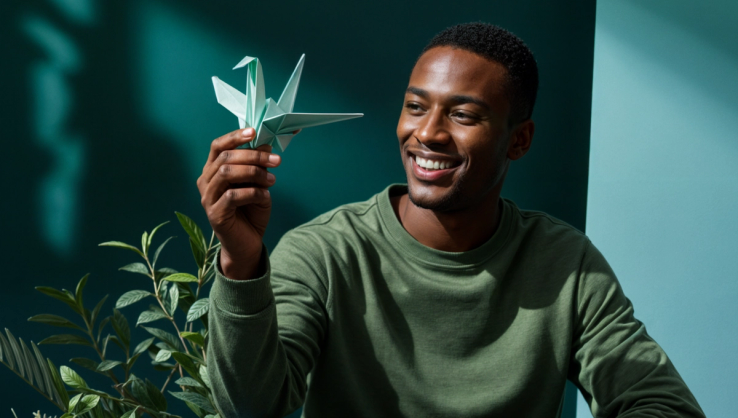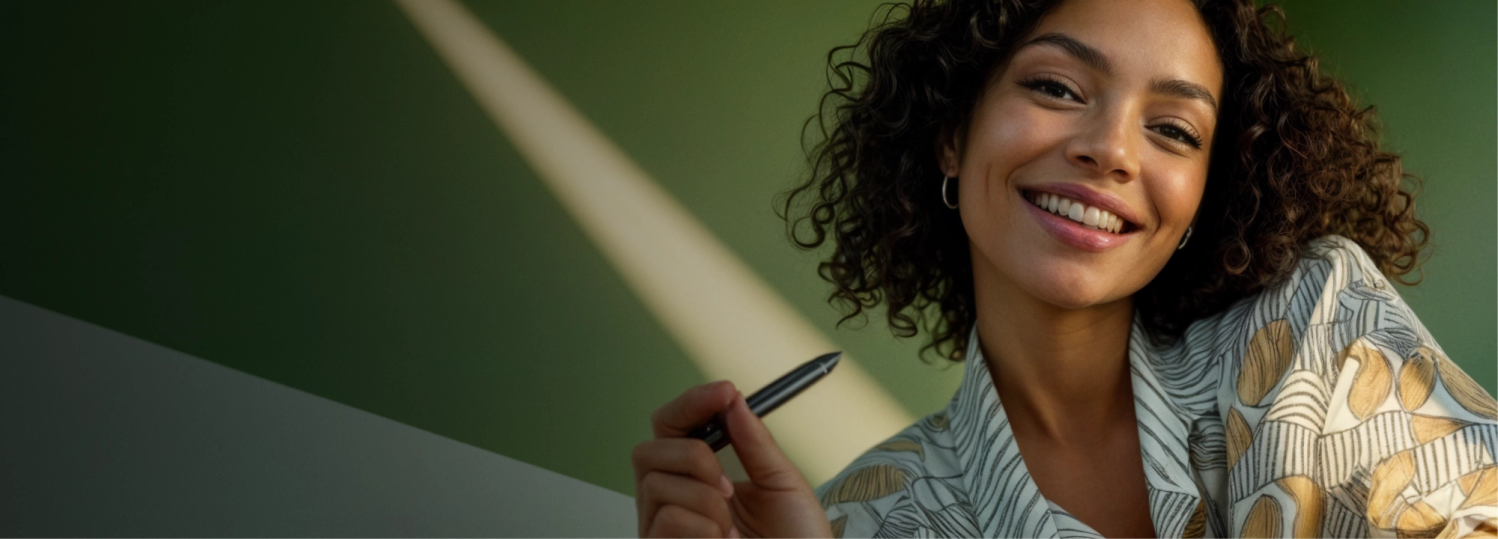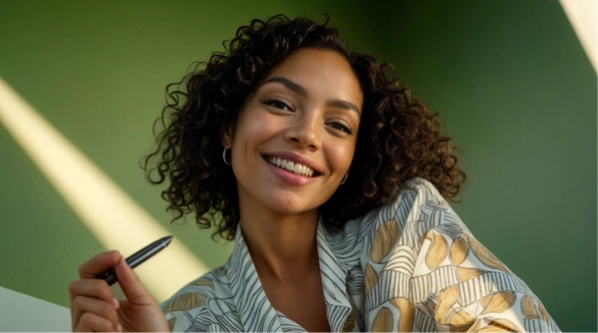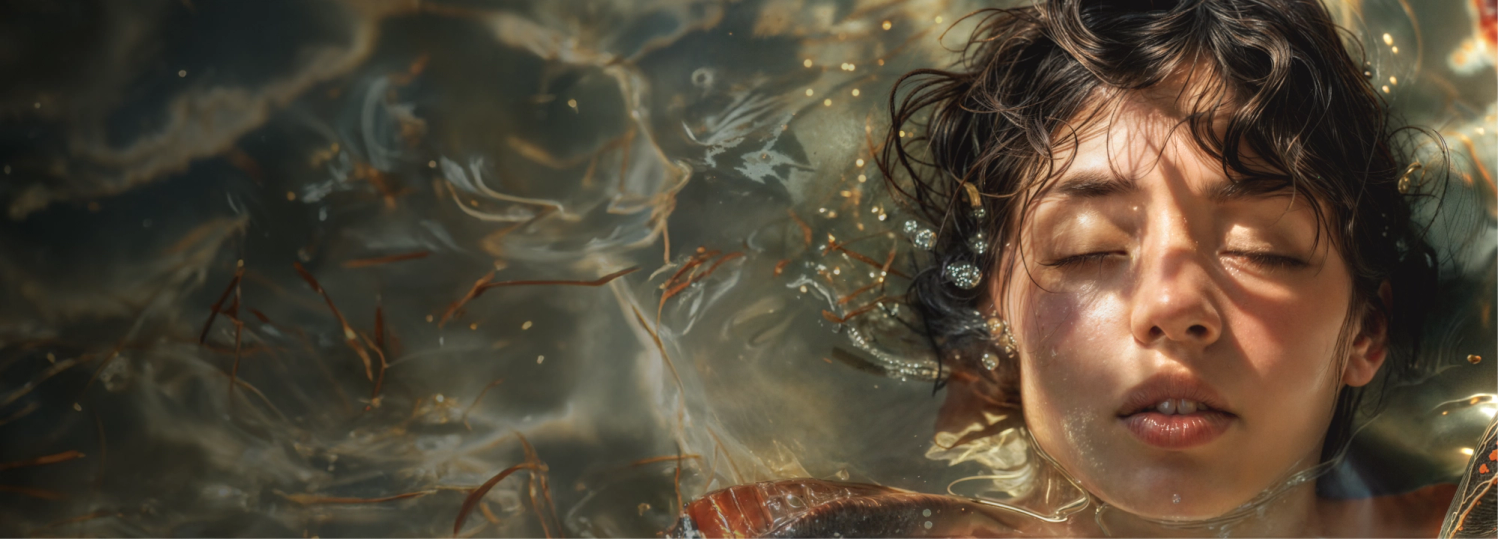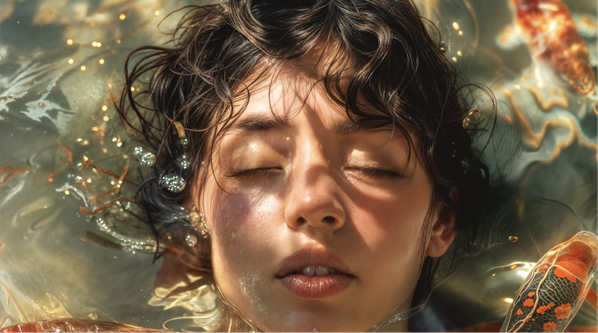AI Art and Graphic Design: How Technology is Shaping Art

More and more companies are implementing new technologies, and we’re seeing a rise in how emerging innovations are being introduced across industries. From finance to nanotechnology and from robotics to blockchain, there's a marked increase in the way humans and machines are working together.
One way, almost paradoxically, is in the implementation of technology in the fields of art and design. A recent movement in design is the arrival of artificial intelligence: this is called AI art.
In short, AI art is when humans and computers work through the creative process together. It is the merging of sophisticated software with individual imagination and, because it’s a new trend in design, the industry is still navigating how the technology can fit into traditional art and design.
But is AI art really art?
It’s a tough question to answer—and not one we’d dare try to, our Twitter account couldn’t take the heat. But it’s a fact that AI is something that already has a part to play in the world of design, and it’s important to understand these design trends to be able to offer the best design services.
With AI technology, computers are able to play an active part in the creative process, with artists using them as not only a tool, but also a canvas, brush, and paint.
Of course, there’s still the human element to them: AI may be able to create a new image, but it’s the act of devising that image that’s still human-led. So, all you creatives out there are safe (for now).
AI art still has its growing pains, and it’s something we’ll be discussing at length in this article.
But first, let’s dive into what AI art and design actually are.
We'll discuss:
AI Art and Design Controversy in the Art World
AI’s Place in the Future of Traditional Art and Design
Here’s some AI art we made on the Nightcafe.studio platform using the prompt “Riverside sunset”
What is AI Art and Design?
AI in art simply refers to the art that has been generated by or with the assistance of artificial intelligence.
AI is a field that is dedicated to building software and machines that imitates human intelligence and the process of thinking through a set of algorithms. To create artwork with AI, artists use artificial intelligence software as a tool in the creative process. This is done with an algorithm that analyses thousands of images online for the software to learn about creating art, and replicate the process behind it.
Using code, an AI artist sets up rules that direct the way the AI software creates the artwork. This includes guiding the AI to generate the work in a certain style and aesthetic as well as which content and subject to draw inspiration from.
How is AI Used in Art?
For AI to be able to create art, it must be taught how to “understand” and replicate the art that has been created. This technique is referred to as style transfer. The AI is developed to identify certain artistic elements of an image and apply the same elements, under the parameters set by the artist, to create a unique image.
While AI created art is most commonly used to create visual art and design, it can also be used in other artistic fields, such as in music and video. AI software can learn music, which uses a foundation of mathematical patterns, to replicate rhythms and generate new pieces of music.
Ten Online AI Art Generators
A popular way for new digital artists to explore AI created art is through online AI generators. These are software platforms that take simple text-based prompts and create art with pre-established parameters in place. To create the artwork, the artist simply needs to dictate what the subject will be - by the text prompt - and choose the style guideline for the artificial intelligence platform to work with.
Here are ten of the AI art generators currently available online:
1. NightCafe Studio
NightCafe Studio has a simple interface that asks you to input a text prompt and choose a style in which you want your art to be. Using the text prompt as a description, the software creates your work.
In this piece, the prompt “1980s music scene” was given, and a “cyberpunk” style was chosen:
When signing up using your email address, you’re given five free credits that determine how much you can modify (or “evolve”) your piece and the length of time the AI will work on your piece. Credits can be bought to create art and refine the pieces.
2. Dream by Wombo
Dream by Wombo is a free AI software tool that does not require an account or any sort of credits to create AI designs.
Dream offers an extensive range of different styles that can be used with the prompt descriptor, such as line-art, realistic, and dark fantasy. Additionally, Dream has a feature that allows you to upload your own image for the AI to reinvent. A nice touch for the cryptoheads out there: you can also connect your cryptocurrency wallets to remix any non-fungible token (NFT) artworks you might have.
3.ml5.js
The key goal behind the development of the open-sourced ml5.js platform is to make machine learning (the inspiration behind the “ml”) accessible to artists and creative coders. The library allows you to access machine learning algorithms and models in their browser, where you can categorise, sketch, and create new art works hand-in-hand with AI technology.
ml5.js has an active support user community, making it a great place to start working with AI art design at a coding level.
4. Google AI Chimera Painter
Google AI's Chimera Painter is a demo AI tool that allows you to create a fully designed artwork from a simple sketch. It takes the basic outline of the piece and fills in the features, with detail and texture to create a realistic piece.
Chimera Painter is most commonly used by game developers to create characters and creatures, such as dragons and monsters.
5. Midjourney
Currently, Midjourney is in closed beta and access is reserved to private invitations and successful applicants. The application process is a simple online form.
Once accepted to the beta, you have a limited trial which provides you with 25 queries. From there, you can buy a membership with different tiers available. The art that can be created through Midjourney prompts has a significant amount of detail to replicate digital art and paintings.
6. DALL·E 2
Since late September 2022, DALL·E 2 is available to the public without special access. While it offers the software to create basic images, the DALL·E 2 system is designed to create hyper-realistic and exceptionally detailed artworks from the artist’s text prompts.
The software is also able to make edits using existing images as the foundation for the art. You can also add and remove artistic elements such as lighting, shadows, reflections, and textures to modify images.
7.Fotor GoArt
Fotor GoArt is an app-based art generator that creates new artwork based on a reference image that you upload. It works both on desktop and mobile devices, and lets you export the finished piece as a 10MP image.
Using the image on the left, GoArt created the image on the right using a “pop art” style. The software is easy to use and you are given the option of generating the image as an NFT, stored on a blockchain network.
8. Artbreeder
Artbreeder is a tool that combines two images to generate a set of new unique images. The platform has a focus on collaboration, where art is a process of participation between images and artists.
Other features offered by Artbreeder include the Collager, which takes the input of simple shapes and text-based prompts to create collages and the Splicer, which allows artists to create portraits, landscapes, and paintings from other artist’s works.
9. Luminar AI
Luminar AI is a little different from other AI art generators, but it’s a valuable tool for photographers to turn their images into digitally rendered art pieces. The software is an AI photo editor that assists photographers in working images from the most basic edits to master touch-ups.
Luminar has three different options for photographers, from $10.44/month with the Pro package. A once-off fee of $136.00 gets you a life-time licence.
10. NVIDIA GauGAN Beta
NVIDIA launched GauGAN, taking inspiration from post-impressionist artist Paul Gauguin. The software can create realistic 3D landscapes, portraits, and dynamic avatars. GauGAN is part of NVIDIA’s creative suite and can be used by anyone.
AI Art Design Controversy in the Art World
There was a degree of outrage and controversy in the art world following the Colorado State Fair in September 2022, when an AI-generated art piece took first prize, beating traditional artists in its category.
The winner, Jason M. Allen, created his art piece ‘Théâtre D’opéra Spatial’ using MidJourney as a creative tool and won the first prize in the "digital arts/digitally-manipulated photography” category. Allen has stated that his piece took more than 80 hours to create, as he crafted it with AI by sifting through thousands of resource images.
He explained:
“Crafting a prompt for the AI is trickier than people may think. It’s like a word game.”
While some artists defended Allen, saying that using the AI generator is similar to using Photoshop and other digital tools to manipulate pieces, others were less inclined to accept that an AI generated piece had won the competition.
One user lamented: “This is like letting a robot participate in the Olympics”. Others took a similar stance, declaring that the artwork was an unfair winner because of the creativity required behind other images.
this is like letting a robot participate in the Olympics https://t.co/RneqiA7YXb
— MEEP🏳️🌈👻🇵🇹 (check pinned) (@meepnesscombat) August 31, 2022
To address the matter, a spokeswoman for the Colorado Department of Agriculture - which oversees the state fair - commented that Allen had disclosed that he had used Midjourney to create the piece. While the two judges of the category have admitted to not knowing that Midjourney is an AI programme, they both stated afterwards that they would have awarded Allen the top prize regardless.
The Ethics of AI in Art Competitions
Allen’s award brings an ethical and legal debate in the art world into light. Some critics believe that AI tools take the library of images online and use them without the permission of the original artist. This means that using an artist’s piece could, without their consent, risk the theft of intellectual property.
Currently, this is still a new topic and there is no legal legislation in place to regulate how original images can be used in AI art and graphic design.
AI Art and Traditional Art
New technology entering the world of art is not new: the invention of the camera took many painters by shock. At the time, many traditional artists saw the ability to “click and create” using a device as a reduction of the integrity of art.
As digital editing tools and design programmes entered the world, purists have similar concerns that the skill required for computer and digital artistry is less than that needed for the creation of physical art like sculpting and painting.
AI’s Place in the Future of Traditional Art and Design
AI in design is still emerging—and there are things that AI graphic design and art models cannot do successfully without human intervention.
For example, words and sentences in AI art are recognisable, but don’t make sense linguistically. Many AI generators struggle to create suitable details in realistic creations, such as accuracy in the portrayal of human hands. Additionally, AI graphic design generators use machine learning to analyse and modify images, but AI software isn’t necessarily versed in understanding and incorporating key principles in graphic design.
AI created art is able to create unique and fascinating pieces. From a practical perspective, however, it cannot replicate the understanding of the creative process needed to develop and edit works with specific specs.
As a result, AI models are likely to find their future in the art and design world as tools by themselves. An AI art generator won’t be able to undertake a commission or fulfil the requirements of a design brief, for example, and relying too heavily on the technology will come with its own set of problems. Rather, it is likely that AI art software will be used to assist artists in digital creativity.
Will AI replace human designers?
Improvements and advances in AI and machine learning means artists and designers have another tool that can be used in the creative process. The combination of coding and human creativity presents another platform for artistic expression, but there are still challenges to overcome in navigating how AI art should be treated in the field of traditional art and design. The real question is will AI replace human designers?
By using the tools we’ve shared in the article, you’ll see that there is plenty of room for improvement in AI creativity and skill. Ultimately, it will always come down to expert designers to work with and refine AI designs to really make an impact and stand out from the crowd (of machines). If you'd like to work with the best humans in collaboration with AI, see how our AI-Enhanced Creative Services are shaping the future of design.







